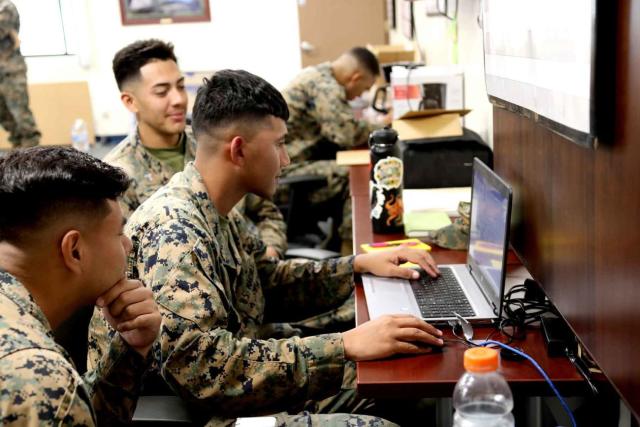
The United States Marine Corps (USMC) has stepped into a new realm of training and preparedness: the metaverse. Partnering with CGI Federal Inc., the USMC aims to leverage this technology to transform defense capabilities. Contrary to Meta Platforms’ conceptualization of the metaverse, the military’s usage focuses on creating a hybrid reality, bridging the real world and a simulated environment.
The integration of logistics systems with digital twins of physical assets in a simulated world environment holds immense promise. This advancement promises enhanced visualization, real-time monitoring, simulation capabilities, and predictive analytics, revolutionizing training, strategy, and operational efficiency for defense organizations.
Challenges and prospects
While the prospects of this military metaverse are vast, concerns linger. Issues regarding equipment ruggedness, data security, encryption, and power supply in diverse operational environments are pivotal considerations. Despite these challenges, the metaverse presents an unparalleled opportunity for the evolution of defense strategies and preparedness.
Bridging reality and simulation
In a departure from Meta Platforms’ conceptualization of the metaverse, the military’s venture involves collaborating with CGI Federal Inc. to delve into this transformative technology. Victor Foulk, CGI’s vice president of emerging technologies, highlights the objective as “bridging the real and the surreal a little more closely.” This entails the development of a hybrid environment that seamlessly integrates real-world mechanics, physics, and geolocation into a simulated realm.
The primary goal is to create virtual replicas, or digital twins, of physical assets within a simulated world environment. These digital twins, coupled with military logistics systems, offer enhanced visualization, real-time monitoring, and predictive analytics capabilities. This innovative approach is poised to redefine how defense organizations train, strategize, and prepare for future challenges.
Revolutionizing logistics and training
Major Jeff Plateen from the Blount Island Command in Florida underscores the need for localized visibility and efficient asset management, especially in dispersed theater settings. The metaverse’s initial focus lies on logistics, streamlining planning, packing, and deployment of a wide array of military equipment. From Meals Ready-to-Eat (MREs) to vehicles like LAV-25s, these items are transformed into virtual replicas within the metaverse, mirroring their real-world counterparts.
The integration of passive RFID tags and tablets for equipment tracking in the real world serves as a foundation for creating “honest replications” within the simulated environment. This innovation enables remote visualization and planning, eliminating the need for personnel to physically inspect or rely on two-dimensional paper load plans.
Concerns over advancement
Alongside the promises of this technological leap forward come significant concerns. Marines express worries about the durability of equipment needed to run the metaverse in rugged environments and the potential vulnerabilities in data security and encryption. Scott Prouse, supervisor for the Automated Systems Group at Marine Corps Logistics Command, assures adherence to stringent security protocols but acknowledges the concerns raised.
The military’s foray into the metaverse presents a balancing act between embracing groundbreaking advancements and addressing critical challenges. Despite these concerns, the potential to revolutionize defense strategies and preparedness through the metaverse remains a compelling frontier for the USMC and defense entities globally.
